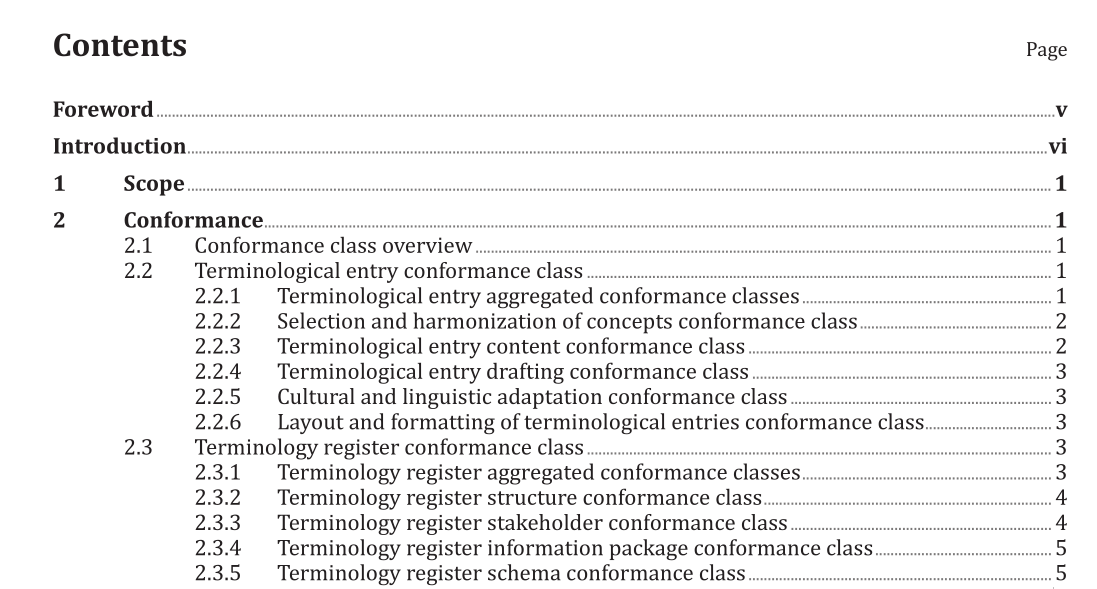ISO 19104:2016 pdf download.Geographic information — Terminology
1 Scope
This document specifies requirements for the collection, management and publication of terminology in the field of geographic information.
The scope of this document includes
— selection of concepts, harmonization of concepts and development of concept systems,
— structure and content of terminological entries,
— term selection,
— definition preparation,
— cultural and linguistic adaptation,
— layout and formatting requirements in rendered documents, and
— establishment and management of terminology registers.
This document is applicable to International Standards and Technical Specifications in the field of geographic information.
2 Conformance
2.1 Conformance class overview
This document defines two aggregate conformance classes, namely
— terminological entry – for preparing and publishing terminological entries, and
— terminology register – for establishing and managing terminology registers.
Any terminological entry or terminology register claiming conformance with this document shall comply with its respective aggregate conformance class and shall satisfy the associated abstract test suite requirements described in Annex A.
2.2 Terminological entry conformance class
2.2.1 Terminological entry aggregated conformance classes
The terminological entry conformance class is an aggregate of five distinct conformance classes, namely
— selection and harmonization of concepts,
— terminological entry content,
— terminological entry drafting,
— cultural and linguistic adaptation, and
— layout and formatting of terminological entries.
The characteristics of the terminological entry conformance class are defined in Table 1.
3 Normative references
The following documents are referred to in the text in such a way that some or all of their content constitutes requirements of this document. For dated references, only the edition cited applies. For undated references, the latest edition of the referenced document (including any amendments) applies.
ISO 639-2, Codes for the representation of names of languages — Part 2: Alpha-3 code
ISO 690, Information and documentation — Guidelines for bibliographic references and citations to information resources
ISO 704:2009, Terminology work — Principles and methods
ISO 860:2007, Terminology work — Harmonization of concepts and terms
ISO 3166-1, Codes for the representation of names of countries and their subdivisions — Part 1: Country codes
ISO 10241-1:2011, Terminological entries in standards — Part 1: General requirements and examples of presentation
ISO 10241-2:2012, Terminological entries in standards — Part 2: Adoption of standardized terminological entries
ISO 12615, Bibliographic references and source identifiers for terminology work
7.1 General
The development of terminology requires a detailed understanding of the concepts that characterize the domain or subject area. Concepts do not exist as isolated units of knowledge but always in relation to each other. Concepts that are structured according to the relations among them are said to form a concept system. A concept system provides a structural representation of the concepts of a subject field. Its modelling requires that the concepts of the subject field be examined and compared. The comparison process helps avoid gaps and overlaps being introduced into the conceptual model. When organizing concepts into a concept system, it is necessary to be cognisant of the subject field that gave rise to the concept, and to consider the expectations and objectives of the target users. The subject field shall act as the framework within which the concept field is established (see ISO 704:2009, 5.5.1).
ISO 19104:2016 pdf download
